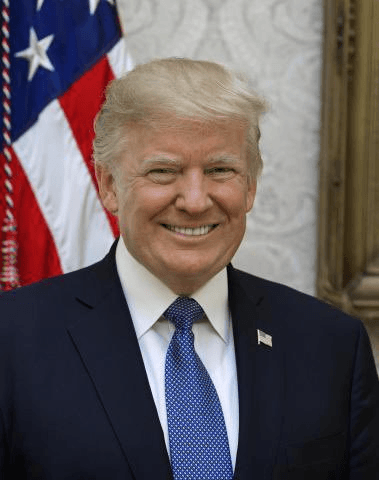
Washington, D.C. – On February 26, 2025, a bombshell announcement from the Trump administration sent shockwaves through the global humanitarian community: more than 90% of the U.S. Agency for International Development’s (USAID) foreign aid contracts are being terminated, effectively gutting $60 billion in assistance that once flowed to vulnerable populations worldwide. The move, detailed in newly released documents, marks a dramatic rollback of America’s decades-long commitment to development and relief efforts abroad, leaving aid workers, nonprofit leaders, and affected families scrambling to understand the fallout.
A Sudden and Sweeping Cut
The decision, unveiled on Wednesday, slashes 5,800 of USAID’s 6,200 multiyear contracts, sparing only a fraction of projects deemed essential by administration officials. For countless communities—from rural clinics in sub-Saharan Africa to education programs in Southeast Asia—this means the abrupt end of lifelines they’ve depended on for years. “It’s like someone flipped a switch and turned off the lights,” said Sarah Mwangi, a nurse in Kenya who relied on USAID funding to stock her mobile health unit with vaccines and supplies. “We were vaccinating kids last week. Now, I don’t know how we’ll keep going.”
The administration’s rationale, spearheaded by President Donald Trump and amplified by tech mogul Elon Musk’s Department of Government Efficiency (DOGE), hinges on a pledge to eliminate what they call “wasteful” spending. In court filings, officials pointed to projects tied to diversity, equity, and inclusion efforts—or those labeled as inefficient—as prime targets for the chopping block. Yet, for those on the ground, the cuts feel less like a pruning and more like an uprooting. “This isn’t waste,” Mwangi insisted. “This is survival.”
Chaos on the Ground
The ripple effects are immediate and profound. In Ukraine, where USAID has supported displaced families amid ongoing conflict, local coordinator Olena Kovalenko described scenes of panic as warehouses sit stocked with undeliverable food and medicine. “We’ve got trucks loaded, ready to go, but no funds to move them,” she said, her voice breaking. “People are asking me when help is coming, and I have no answers.”
Closer to home, the funding freeze has sidelined thousands of USAID staff. Over 4,700 employees were placed on administrative leave earlier this week, while at least 1,600 U.S.-based jobs have been axed outright. Contractors, too, are reeling—many received impersonal termination letters over the weekend, some lacking even their names, complicating efforts to secure unemployment benefits. “I’ve given 15 years to this work,” said Mark Rivera, a former USAID logistics specialist based in Washington. “Now I’m out of a job, and the people I served are out of hope.”
Legal Battles and a Glimmer of Resistance
The cuts haven’t gone unchallenged. Nonprofit groups and USAID contractors have flooded federal courts with lawsuits, arguing that the administration lacks the authority to dismantle an agency—and its congressionally approved programs—without legislative approval. On Tuesday, U.S. District Judge Amir Ali ordered the administration to release billions in frozen funds within 36 hours, citing its failure to comply with an earlier ruling. But hours later, Chief Justice John Roberts stepped in, pausing Ali’s order at the administration’s request, leaving the legal standoff in limbo as of Wednesday evening.
For advocates like Maria Delgado, who leads a coalition of aid organizations, the courtroom skirmishes are a desperate bid to salvage what’s left. “We’re not just fighting for contracts,” she said, clutching a stack of photos from projects now in jeopardy—children in Haiti, farmers in Bangladesh, mothers in Yemen. “We’re fighting for lives.”
A Policy Upended, A Legacy at Stake
For decades, USAID has been a cornerstone of U.S. foreign policy, seen as a tool to stabilize regions, foster alliances, and counter rival powers through “soft power.” Its $60 billion budget fueled everything from disaster response to disease prevention, including the lauded PEPFAR program, credited with saving over 20 million lives from HIV/AIDS. Critics of the cuts, including some bipartisan lawmakers, warn that slashing it now could cede influence to nations like China and erode America’s moral standing. “This isn’t just about money,” said Senator Chris Murphy (D-Conn.) in a statement. “It’s about who we are.”
Yet the administration remains defiant. In a briefing Wednesday, a senior official doubled down, insisting the cuts align with Trump’s “America First” vision. Musk, meanwhile, has taken to social media to frame the overhaul as a victory for taxpayers, though his posts have also veered into conspiracy-laden attacks on USAID’s past operations.
The Human Cost in Focus
As the policy debate rages, the human toll mounts. In India, where USAID-funded health initiatives have long bolstered local systems, the cuts coincide with a separate controversy over alleged voter turnout funding—claims the Indian government called “deeply troubling” last week. For villagers like Priya Sharma, who relied on USAID-backed clean water projects, the geopolitics feel distant. “We had a pump installed last year,” she said, gesturing to a now-idle well. “They told us more help was coming. What do we do now?”
Back in Washington, Rivera, the laid-off USAID worker, echoed her uncertainty. “I keep thinking about the people I met overseas—their faces, their stories,” he said, staring at a box of belongings from his old office. “We promised them we’d be there. What happens when you break a promise that big?”
The Road Ahead
As of 9:06 PM PST on February 26, the future of USAID hangs in the balance. With legal battles escalating and aid programs teetering, the next moves—whether from the courts, Congress, or the White House—could redefine America’s role on the world stage. For now, though, the story is one of disruption and distress, a policy shift felt not in abstract numbers but in the quiet, desperate questions of those left behind.
Also Read : Tata Capital IPO: Revolutionizing India’s Financial Market in 2025
